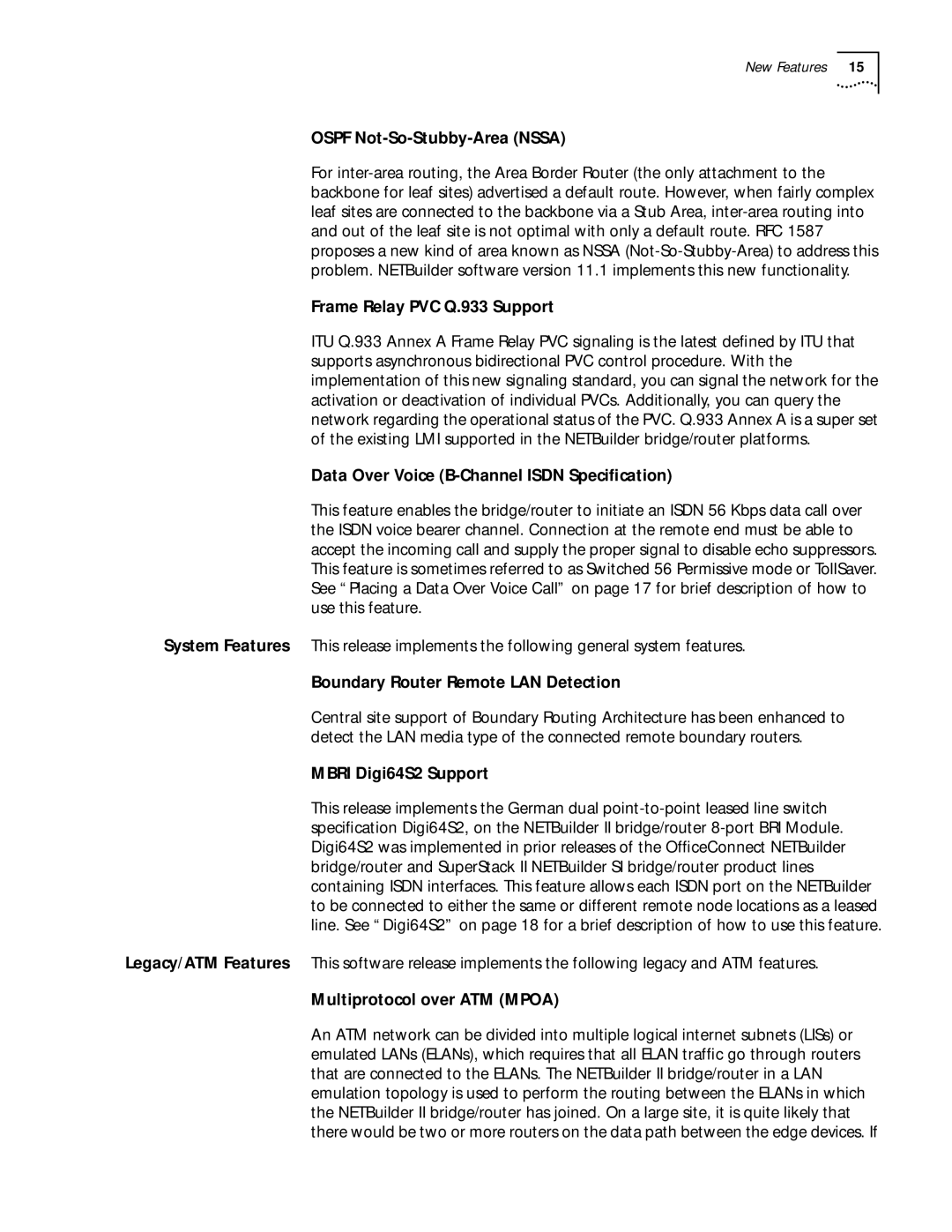New Features 15
OSPF Not-So-Stubby-Area (NSSA)
For
Frame Relay PVC Q.933 Support
ITU Q.933 Annex A Frame Relay PVC signaling is the latest defined by ITU that supports asynchronous bidirectional PVC control procedure. With the implementation of this new signaling standard, you can signal the network for the activation or deactivation of individual PVCs. Additionally, you can query the network regarding the operational status of the PVC. Q.933 Annex A is a super set of the existing LMI supported in the NETBuilder bridge/router platforms.
Data Over Voice (B-Channel ISDN Specification)
This feature enables the bridge/router to initiate an ISDN 56 Kbps data call over the ISDN voice bearer channel. Connection at the remote end must be able to accept the incoming call and supply the proper signal to disable echo suppressors. This feature is sometimes referred to as Switched 56 Permissive mode or TollSaver. See “Placing a Data Over Voice Call” on page 17 for brief description of how to use this feature.
System Features This release implements the following general system features.
Boundary Router Remote LAN Detection
Central site support of Boundary Routing Architecture has been enhanced to detect the LAN media type of the connected remote boundary routers.
MBRI Digi64S2 Support
This release implements the German dual
Legacy/ATM Features This software release implements the following legacy and ATM features.
Multiprotocol over ATM (MPOA)
An ATM network can be divided into multiple logical internet subnets (LISs) or emulated LANs (ELANs), which requires that all ELAN traffic go through routers that are connected to the ELANs. The NETBuilder II bridge/router in a LAN emulation topology is used to perform the routing between the ELANs in which the NETBuilder II bridge/router has joined. On a large site, it is quite likely that there would be two or more routers on the data path between the edge devices. If
